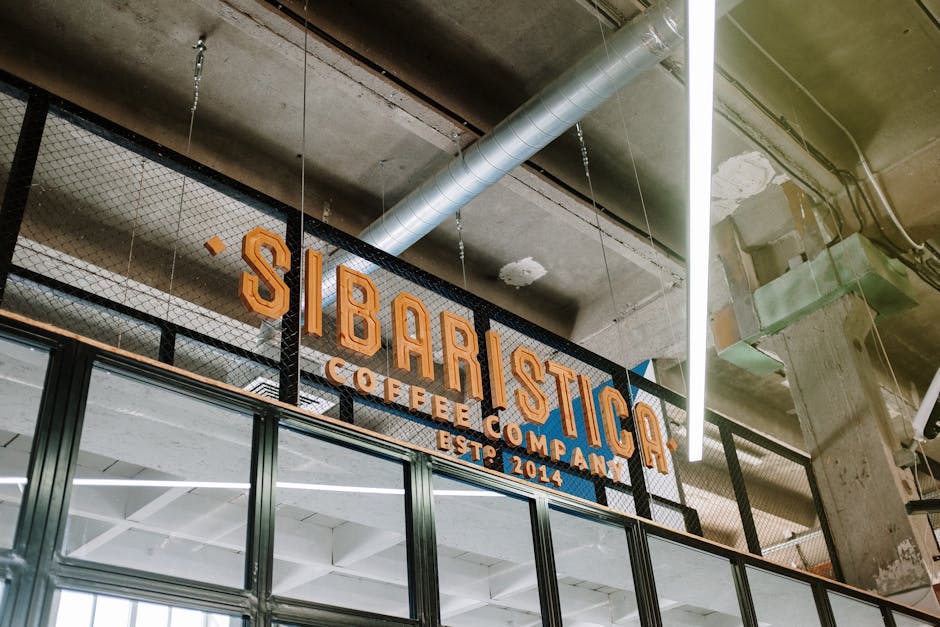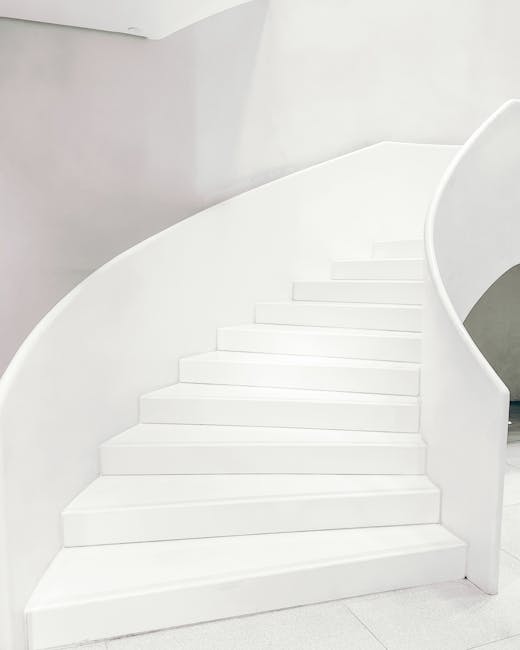
In a world where everyone and their mother has a blog, website, or social media page, standing out from the digital noise can feel like trying to find a vegan option at a barbecue joint. But fear not, aspiring brand builders, for the secret weapon in your quest for online visibility lies in the almighty logo. In this article, we’ll explore the wild and wacky world of designing distinctive logos in the digital age, where pixels, puns, and personality collide to create memorable marks that leave a lasting impression. So put on your thinking cap and let’s dive into the wonderful world of logo design – it’s gonna be a wild ride!
Understanding Brand Identity
So you think you understand brand identity, huh? That’s cute. Let me break it down for you in a way that even your grandma could understand.
First off, brand identity is like your brand’s DNA. It’s what sets you apart from all those other wannabe brands out there. Just like every snowflake is unique, so is your brand identity. Embrace your uniqueness, darling!
Now, let’s talk about the elements that make up your brand identity. It’s like putting together the perfect outfit – you need the right pieces to make a statement. Here are some key components:
- Logo: This is like your brand’s signature. It’s the first thing people see and remember about you. So, make it pop!
- Color palette: Colors evoke emotions, so choose wisely. Are you a bold red or a calming blue?
- Typography: The fonts you use say a lot about your brand’s personality. Are you a sophisticated serif or a playful script?
Remember, brand identity is not just about looking pretty – it’s about telling your story. So, go ahead and show the world what makes you special!

Utilizing Minimalistic Designs
Have you ever felt overwhelmed by cluttered designs and busy layouts? Fear not, because the minimalist movement is here to save the day! Minimalistic designs are all about simplicity, clean lines, and uncluttered spaces. By embracing minimalism, you can create stunning visuals that are both elegant and effective.
When it comes to minimalistic designs, less is definitely more. Embrace negative space and let your designs breathe. Use a limited color palette to create a sense of harmony and balance. Remember, simplicity is key! Avoid using unnecessary elements that detract from the overall aesthetic of your design. Keep it clean, keep it simple, and watch your work shine.
One of the great things about minimalistic designs is their versatility. Whether you’re designing a website, a logo, or a poster, minimalism can work in almost any context. By stripping away the excess and getting to the core of your message, you can create designs that are both impactful and memorable. So why not give minimalism a try? You might be surprised by how much you can accomplish with just a few basic elements.
In a world filled with endless distractions and noise, minimalistic designs offer a breath of fresh air. So why not embrace the beauty of simplicity and let your creativity shine? Remember, less is more, and sometimes, the simplest designs are the most striking. Go ahead, give minimalism a try – your eyes (and your audience) will thank you!
Incorporating Digital Elements
When it comes to into your project, the possibilities are endless! It’s like being a magician with a never-ending bag of tricks, but instead of pulling out rabbits, you’re pulling out pixels and code.
One of the best ways to add a digital touch to your project is by including interactive elements. Whether it’s a clickable map, a slideshow of animated GIFs, or a quiz that tells you which Harry Potter character you most resemble (we all want to be Hermione, let’s be real), interactive features are guaranteed to keep your audience engaged.
Don’t be afraid to sprinkle in some multimedia elements as well. Maybe add a video tutorial on how to make the perfect margarita (because who doesn’t need a drink after a long day of coding?), or a podcast discussing the latest tech trends. Mixing in different forms of media not only adds depth to your project but also shows off your digital savvy.
And remember, the key to successfully is to keep things fun and user-friendly. No one wants to feel like they’re navigating through a digital maze just to find the information they need. So keep it simple, keep it sleek, and most importantly, keep it digital!

Choosing Appropriate Colors
When it comes to choosing colors for your project, it can feel overwhelming. But fear not, dear reader! We are here to guide you through the wonderful world of .
First things first, consider the mood you want to convey with your color palette. Are you aiming for a calming vibe? Opt for blues and greens. Want to make a statement? Go bold with reds and yellows. The world is your oyster when it comes to color choices!
Don’t be afraid to experiment with different color combinations. Mix and match until you find the perfect palette that speaks to you. Remember, there are no rules when it comes to color - except maybe don’t pair neon green with hot pink… unless you’re going for that particular 90s rave aesthetic.
Lastly, trust your gut. If a color speaks to you on a deep, soulful level, go with it. Your intuition is a powerful tool when it comes to choosing colors. And hey, if all else fails, just close your eyes and point to a color on the color wheel. You never know, it might just be the perfect shade for your project!

Creating Scalable Logos
When creating logos, it’s important to keep scalability in mind. You don’t want your logo to look like a pixelated mess when it’s blown up to billboard size, or a tiny smudge when it’s shrunk down to fit on a business card. Here are some tips to help you create logos that can scale with ease:
First and foremost, **keep it simple**. The more intricate your logo is, the harder it will be to scale up or down without losing detail. Stick to clean lines and bold shapes that will look good at any size.
Another thing to consider is **font choice**. If your logo includes text, make sure to choose a font that is easily readable at all sizes. Avoid overly decorative fonts that may become illegible when scaled down.
Lastly, think about **color**. Bright, bold colors may look great on a computer screen, but they can be overwhelming when blown up to a larger size. Stick to a simple color palette that will look good no matter how big or small your logo is.
Testing for Versatility
When it comes to , it’s important to explore all the different ways a product or service can be used. Think about it like this: if a hammer can also double as a hairbrush, then you’ve got a versatile tool on your hands! So, let’s put on our detective hats and get to testing!
We’ll start by taking our product and putting it through a series of unconventional tasks. Can it withstand being used as a makeshift umbrella during a sudden downpour? Or perhaps it can moonlight as a coffee mug for those late-night work sessions? The possibilities are endless!
Next, we’ll gather a group of unsuspecting volunteers and have them brainstorm all the different ways our product could be used. From a doorstop to a makeshift paperweight, the ideas will be flowing faster than a leaky faucet!
And finally, we’ll put our product to the ultimate test: the versatility challenge. We’ll time how quickly our volunteers can come up with 10 different uses for the product. Bonus points for creativity and hilarity!
Implementing Responsive Design
So, you’ve decided to dive into the world of responsive design, huh? Buckle up, because things are about to get wild!
First things first – make sure you kick things off by setting a viewport meta tag in your HTML. It’s like giving your website a pair of glasses so it can see the world clearly, no matter the size of the device.
Next up, start thinking about using **percentage-based measurements** instead of fixed pixels. Because let’s be real, nobody likes a website that looks like it’s stuck in the Stone Age on a mobile device. Embrace the fluidity, my friend.
And don’t forget about **CSS media queries!** These bad boys are like the secret weapon in your arsenal. With just a few lines of code, you can make your website adapt and flex like a seasoned yogi. It’s like magic, but better.
Finally, always, always, ALWAYS test your responsive design on different devices. Because you never know how your website might look on Aunt Mildred’s ancient flip phone. And trust me, you don’t want to start getting calls about squished text and wonky images. So, embrace the chaos, my friend, and happy coding!
FAQs
Why is it important for businesses to have a distinctive logo?
Well, you wouldn’t want your business to blend in with the crowd, would you? A distinctive logo helps your brand stand out in a sea of competition and leaves a lasting impression on your customers.
How can businesses ensure their logos are unique in the digital age?
One word: creativity. Get those creative juices flowing and think outside the box. You want a logo that not only represents your brand but also sets you apart from the rest.
What are some common mistakes businesses make when designing logos in the digital age?
One common mistake is trying to follow the latest design trends too closely. Trends come and go, but a timeless logo will stand the test of time. So, ditch the fads and focus on creating something truly unique.
How important is it for logos to be versatile in the digital age?
Very important! Your logo should look just as good on a tiny smartphone screen as it does on a giant billboard. Make sure your logo is scalable and adaptable across various platforms and mediums.
What role does color play in designing a distinctive logo?
Color can make or break a logo. Choose colors that not only reflect your brand’s personality but also resonate with your target audience. And remember, less is more – don’t go overboard with a rainbow of colors.
Stand Out with Your Logo Design
Well, there you have it – the secrets to designing distinctive logos in the digital age. With a little creativity, attention to detail, and a touch of humor, you can create a logo that truly stands out from the crowd. So go forth, dear reader, and let your imagination run wild! Who knows, maybe your logo will be the next big thing in the ever-evolving world of design. Happy creating!











